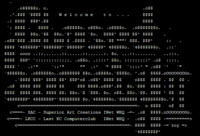
Photo from wikipedia
A novel experimental approach is proposed for creating surface microdefects in situ during SVET analysis. Hot-dip galvanized steel samples fixed in the SVET cell and exposed to 0.05 M NaCl… Click to show full abstract
A novel experimental approach is proposed for creating surface microdefects in situ during SVET analysis. Hot-dip galvanized steel samples fixed in the SVET cell and exposed to 0.05 M NaCl were scratched using a Berkovich indenter. The progress of corrosion activity at defect locations was continuously inferred by SVET scan lines starting 10 s after scribing. The time-dependent inhibitive effect of molybdate was appraised upon repetitive surface damage. The results highlight the interest of combining localized electrochemical techniques with in situ scratching for an improved understanding of time-sensitive corrosion/inhibition processes related to active microscopic defects. © 2020 The Electrochemical Society (“ECS”). Published on behalf of ECS by IOP Publishing Limited. [DOI: 10.1149/1945-7111/ abbdd9]
Journal Title: Journal of The Electrochemical Society
Year Published: 2020
Link to full text (if available)
Share on Social Media: Sign Up to like & get
recommendations!